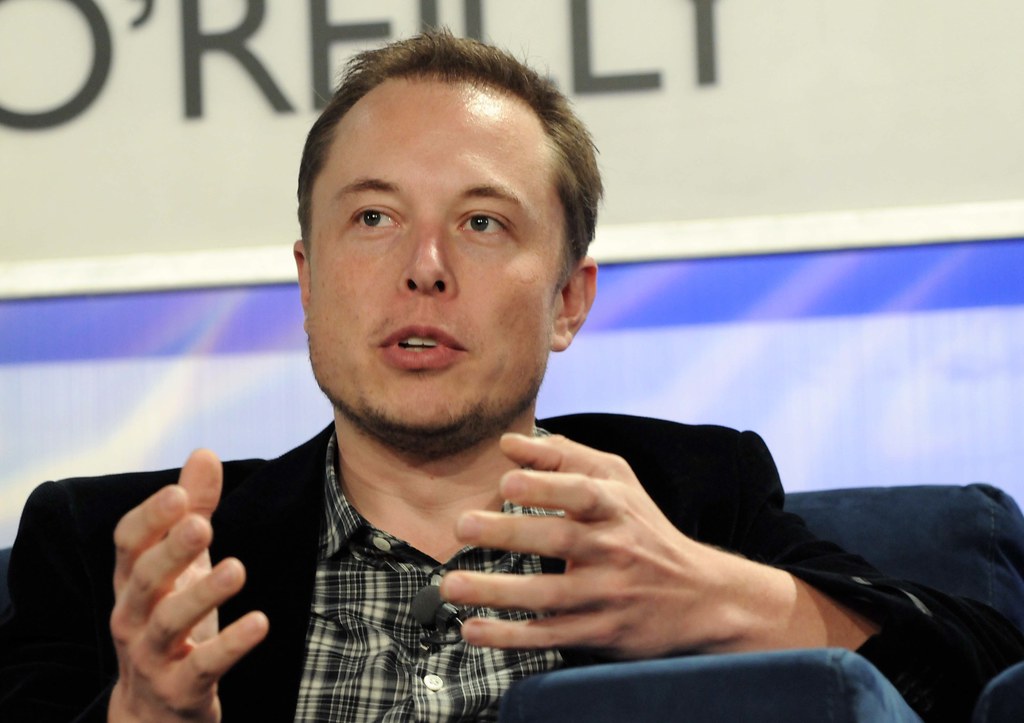Main Points:
- Aggressive Spending Cuts: Musk outlines a plan to reduce federal spending by approximately $40 billion per day to shrink the deficit from $2 trillion to $1 trillion by FY2026.
- Government Efficiency Overhaul: The initiative focuses on eliminating wasteful programs such as unnecessary hires, outdated DEI initiatives, and improper foreign payments to achieve daily savings.
- Technological Modernization: DOGE aims to upgrade federal technology and software, modernizing government operations while cutting bureaucratic inefficiencies.
- Fiscal Sustainability and Economic Growth: Musk contends that strong economic growth will eventually neutralize the remaining deficit, eliminating inflation risks by 2026.
- DOGE’s Timeline and Strategic Goals: Launched through a presidential order and set to conclude on July 4, 2026, DOGE’s mandate is to catalyze lasting fiscal reform.
- Broader Implications and Emerging Trends: The initiative dovetails with growing interest in blockchain-based solutions and new digital assets as investors and innovators look for fresh revenue sources and more efficient government systems.
1. Aggressive Spending Cuts: The $40 Billion Daily Target
Elon Musk, a titan in technology and entrepreneurship, has put forward an ambitious strategy aimed at drastically reducing the United States’ federal spending. In a recent disclosure on the social media platform X, Musk explained that in order to cut the federal deficit from $2 trillion to $1 trillion for the FY2026, the government must slash its expenditures by approximately $40 billion every day until September 30. This figure represents not just a numerical target but a bold challenge to entrenched governmental spending habits.
Musk’s argument is built on the premise that if such sweeping cuts are achieved, the resulting surplus in economic growth will be sufficient to offset the remaining deficit. This, he believes, could lead to a future where inflation is effectively eliminated—a scenario he described as “ultra-important.” The emphasis on a daily spending cut quantifies the urgency of reform and provides a clear metric by which the government’s progress can be measured. By spotlighting the need for a $40 billion reduction per day, Musk not only lays out the scale of inefficiency within the current federal apparatus but also invites a broader discussion about fiscal responsibility and economic sustainability.
2. Government Efficiency Overhaul: Eliminating Waste and Red Tape
At the heart of Musk’s DOGE initiative is a commitment to reforming government inefficiency. According to information shared on X, DOGE has already achieved significant progress. By eliminating unnecessary employment, scrapping outdated diversity, equity, and inclusion (DEI) programs, and ceasing inappropriate payments to foreign organizations, the initiative has managed to save the federal government approximately $1 billion per day.
These measures, while contentious in some policy circles, are intended to directly address inefficiencies that contribute to the bloated federal budget. The decision to dismantle certain programs is in line with a broader philosophy of lean government management—one that prioritizes efficiency over ceremonial or redundant expenditures. Proponents argue that these changes are essential for modernizing the federal workforce and reducing bureaucratic inertia, while critics voice concerns about the potential social and diplomatic repercussions of such deep cuts. Nonetheless, Musk’s strategy demonstrates a commitment to radical reform, aiming to streamline government operations in a way that could set a precedent for other nations grappling with similar fiscal challenges.
3. Technological Modernization and the Role of DOGE
DOGE, an initiative established by a presidential order in November 2024 and formally launched earlier this year, was originally set to be co-led by Elon Musk and Vivek Ramaswamy. However, prior to the project’s commencement, Ramaswamy withdrew, leaving Musk at the helm of this transformative effort. The initiative’s official mandate, as outlined in the original presidential directive, is to modernize federal technology and software systems. By updating these critical infrastructure components, DOGE seeks not only to reduce costs but also to improve government efficiency and productivity.

In this context, DOGE is positioned as a fusion of high technology and fiscal policy. It represents a forward-thinking approach that leverages modern tech solutions—potentially including blockchain and other distributed ledger technologies—to create a more agile and responsive government. The integration of digital asset strategies into a federal reform plan is particularly intriguing given the growing interest in cryptocurrencies and decentralized finance among investors and technologists alike. By aligning the initiative with contemporary tech trends, Musk is also indirectly signaling that the future of government may well lie in a hybrid model that embraces both traditional fiscal management and cutting-edge digital innovation.
4. Fiscal Sustainability and Economic Growth: Countering Inflation Through Reform
Musk’s vision extends beyond mere cost-cutting; it is a comprehensive strategy to achieve fiscal sustainability and foster economic growth. He argues that, even after implementing the proposed spending cuts, a deficit of about $1 trillion will remain. However, he is confident that robust economic growth will eventually counterbalance this figure, effectively eliminating inflation in the process. The idea is that by significantly reducing waste and redirecting funds towards growth-inducing sectors, the government can set off a virtuous cycle where increased productivity and innovation drive economic stability.
This perspective is not without precedent. Fiscal reform measures in various countries have often been linked to long-term economic benefits, including improved market confidence and reduced inflationary pressures. Musk’s comments echo this economic theory, suggesting that prudent fiscal management and strategic spending reductions can create an environment where inflation is not only controlled but ultimately eradicated. While such outcomes depend on a range of variables—from global economic conditions to domestic policy responses—the fundamental notion remains that structural reform is key to ensuring long-term economic prosperity. Moreover, these arguments come at a time when concerns about rising government debt and potential financial crises are increasingly at the forefront of public debate.
5. DOGE’s Timeline and Strategic Goals: A Deadline for Transformation
DOGE is not designed to be an indefinite experiment. The initiative has a clearly defined timeline, with operations set to conclude on July 4, 2026. This deadline adds a sense of urgency and finality to the project. By establishing a firm endpoint, the program is forced to deliver measurable outcomes within a finite period—a strategic move that emphasizes accountability and results over prolonged experimentation.
The decision to tie the initiative’s conclusion to a symbolic date such as July 4, which is synonymous with American independence, reinforces the patriotic narrative that underpins the reform effort. It suggests that the elimination of government inefficiencies is not only an economic imperative but also a matter of national pride and sovereignty. With a firm timeline in place, stakeholders are compelled to work expeditiously, and progress can be monitored with a clear set of benchmarks. This deadline-driven approach, while ambitious, is intended to mobilize both political and public support by promising tangible improvements in a relatively short span of time.
6. Broader Implications and Emerging Trends: Blockchain, Cryptocurrencies, and the Future of Government
Beyond the immediate fiscal and administrative reforms, Musk’s DOGE initiative is situated within a larger context of technological and economic innovation. At a time when digital assets and blockchain technology are reshaping industries around the globe, the integration of such modern tools into government reform strategies represents a significant development. Investors and innovators who are actively searching for the next breakthrough in digital assets are likely to find the melding of blockchain strategies with traditional fiscal policy particularly appealing.
Recent trends in the cryptocurrency space indicate a growing interest in the use of decentralized technologies to promote transparency and efficiency in various sectors, including government operations. By aligning DOGE with these trends, Musk not only addresses the inefficiencies of a bureaucratic system but also leverages the momentum behind digital innovation. This synergy between blockchain and government reform could pave the way for more widespread adoption of digital asset frameworks in public administration. Moreover, as other countries and institutions look to modernize their own systems, the success or failure of initiatives like DOGE will serve as a valuable case study in the practical application of blockchain and tech-driven fiscal reform.
Several financial news outlets and technology analysts have begun discussing the potential ripple effects of Musk’s initiative on both the national and global stage. Reports from sources such as Bloomberg and Reuters have highlighted that government efficiency reforms are becoming a hot topic among policy makers, investors, and tech enthusiasts alike. The growing dialogue around these issues underscores the fact that DOGE is part of a larger movement towards digital modernization—a trend that shows no signs of slowing down in the near future.
A Comprehensive Transformation of Federal Fiscal Policy
In summary, Elon Musk’s DOGE initiative represents a multi-faceted approach to addressing longstanding issues of government inefficiency and fiscal mismanagement. By setting a daunting goal of reducing federal spending by $40 billion per day, the plan seeks to halve the national deficit from $2 trillion to $1 trillion by the end of FY2026. This aggressive cost-cutting, coupled with targeted measures to eliminate wasteful programs and modernize outdated systems, forms the crux of a strategy aimed at achieving long-term fiscal sustainability and economic growth.
The initiative’s focus on technological modernization, particularly through the potential incorporation of blockchain technology, further highlights its innovative nature. DOGE’s defined timeline, ending on July 4, 2026, underscores a commitment to accountability and results, while its broader implications point towards a future where digital assets and decentralized systems play a pivotal role in public administration.
For those seeking new digital assets, revenue streams, or practical applications of blockchain technology, the DOGE initiative offers a compelling case study. Its blend of fiscal reform, technological upgrade, and economic strategy encapsulates a forward-looking vision that may well set the tone for governmental operations in the years to come. Ultimately, Musk’s proposal is not merely about reducing government spending—it is about rethinking the very foundations of public fiscal policy to create a more efficient, accountable, and dynamic system.


